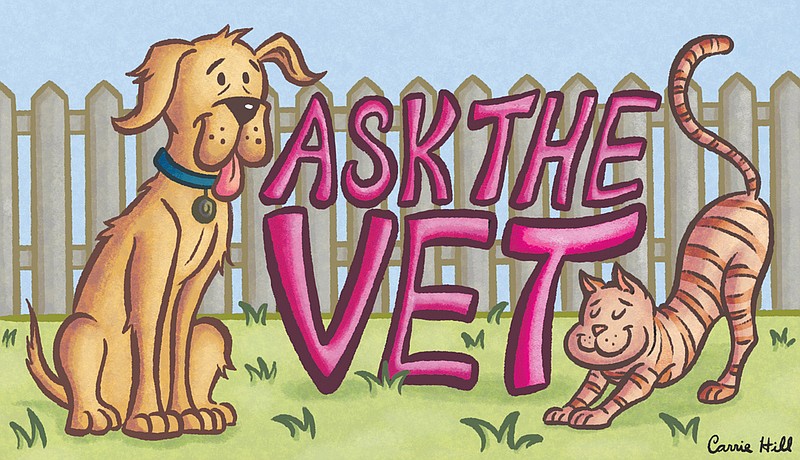Q Latte, our 8-year-old indoor cat, suddenly started crying and pulling himself along on his front legs while dragging his back legs. We rushed him to his veterinarian who diagnosed a saddle thromboembolism and recommended euthanasia because Latte's prognosis was so dire.
We agreed, but because of Latte's stress and ours at the time, we don't remember everything the vet said about his condition. Please explain it.
A I am so sorry to hear of your experience and extend my condolences.
A saddle thromboembolism is a clot that forms in the heart, travels through the large artery called the aorta, and lodges at the "saddle" where the aorta branches into the arteries that supply blood to the hind legs.
The clot blocks blood flow to the hind legs, causing severe pain, loss of hind leg function, cool hind paws with pale or bluish pads, and diminished or absent pulses in the hind legs.
Both hind legs are affected in 78% of cats, and one hind leg is involved in 21%.
In over 90% of cats with saddle thromboembolism, the cause is heart disease, usually a condition called hypertrophic cardiomyopathy that wasn't evident. The prevalence is higher in males. Saddle thromboembolism usually appears around 8 to 12 years of age.
Half the cats with thromboembolism also exhibit congestive heart failure, with excess fluid in the lungs and breathing difficulties, including rapid, open-mouth breathing.
The prognosis is grave: Only a small percentage of cats with saddle thromboembolism survive. Long-term complications are common, and thromboembolism recurs in half the survivors.
Q Some of our neighbors allow their dogs to swim in our community swimming pool. Others of us without dogs don't like it. Please give us facts to help us keep the dogs out of the pool.
A My answer may not help as much as you want. For 10 years, I owned a home with an in-ground concrete swimming pool, and my dogs swam in it without any problems for them, humans or the pool filtration system.
However, friends with vinyl pool liners complained their dogs' nails scratched the liners, so that's a concern if your community pool has a similar liner.
If you're worried about the dogs spreading disease, I suspect you're more likely to acquire something from another human you encounter at the pool.
Still, dogs can share some diseases with humans. To help prevent that, each dog in the community should have a current rabies vaccination. In addition, every dog that swims in the community pool should be healthy.
That means they should be free of skin infections, diarrhea, digestive symptoms, coughing and sneezing. For that matter, the people using the pool should be similarly healthy.
You might post a sign asking people to hose off their dogs before they enter the pool to remove any leaves or dirt in the dog's coat.
If the majority of the community prefers that dogs not swim in the pool during the summer, consider a compromise: At the end of each season, before the pool is emptied and cleaned, invite the dogs to swim.
Make the event a fundraiser for the pool, the community dog park, the local animal shelter or dog rescue agency, or the nearest veterinary school. Name it Paws in the Pool, Pooch Plunge or Doggie Paddle, and make it an annual event.
Lee Pickett, VMD, practices companion animal medicine in North Carolina. Contact her at
vet@askthevet.pet
